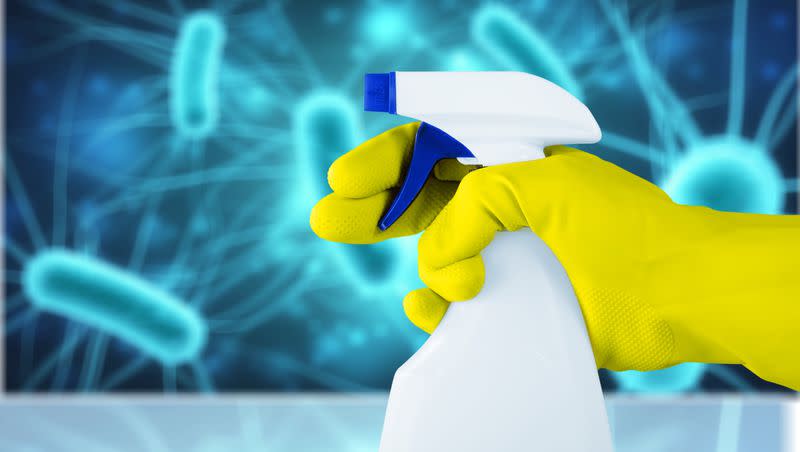Experts say we are disinfecting more than is necessary

It may not look like it outside, but the time for spring cleaning has technically arrived. This season, it might be a good idea to ditch the excessive disinfecting and move to safer cleaning methods that are just as effective.
Disinfectants do little to stop the spread of COVID-19
The COVID-19 pandemic brought on a surge in the use of bleach, disinfectant spray and disinfecting wipes. In one study, 53% of participants reported using more antibacterial cleaning products during the pandemic than before, and this kind of growth is only expected to continue, according to Fortune Business Insights.
Related
The rush to stock up on disinfectants was understandable — at one point, the Environmental Protection Agency said products like Lysol, Clorox and Microban 24 could kill COVID-19. In the face of a seemingly unstoppable illness, constant disinfection gave many people peace of mind.
“The pandemic has had a huge psychological impact on how Americans view cleanliness,” said Anand Subbaraj, CEO of a software company that assists cleaning services businesses, per Forbes.
But as experts gathered more data, they discovered that disinfecting is hardly effective in slowing the spread of the virus. The likelihood of contracting COVID-19 from a contaminated surface is less than 1 in 10,000, so other preventative measures are more worth the effort.
“Sanitizing or disinfecting to reduce the spread of disease at home is likely not needed unless there are sick people in your home,” the Centers for Disease Control and Prevention said.
Disinfectants may have adverse health effects
It wasn’t just disinfectant purchases that rose during the pandemic — poison control calls increased as well. The second most common reason behind the calls was household cleaning products.
The main disinfectant ingredients that experts are worried about are quaternary ammonium products, also called “quats” or “QACs.” According to The New York Times, quats usually have a chemical name ending in “ammonium chloride” and are found in Lysol, Clorox, 409, or anything that says “kills 99.9 percent of germs.”
Related
Quats can lead to skin irritation and lung issues. Studies show that nurses who regularly use quats to clean medical equipment are more likely to contract asthma and COPD.
These chemicals have also been linked to weakened immune systems and resistance to antibiotics, which can be essential in treating infections.
A series of studies recently found increased levels of quats in dust, blood and even breast milk, which the researchers attribute to heightened disinfectant use during the pandemic.
Bleach is a dangerous disinfectant ingredient that is harder to avoid. On its own, bleach can burn the skin and eyes. When mixed with ammonia or certain acids, which may appear in other cleaners, it can produce toxic gases used in chemical weapons, says the Times.
What cleaners to use instead
Everyday cleaning does not require disinfecting — experts say soap and water is strong enough to get the job done. Throw in a little baking soda for tougher spots like soap scum or mildew.
Another effective do-it-yourself concoction is vinegar and water — a half cup of white wine vinegar combined with two cups of water can get rid of counter, window and carpet stains.
When shopping for off-the-shelf products, look for brands that have the Environmental Protection Agency’s “Safer Choice” or “Design for the Environment” certifications.
If someone in the house is sick, a stronger cleaner may be warranted. In that case, the safest bet is a product that uses citric acid or hydrogen peroxide rather than any quats or bleach.
Related

